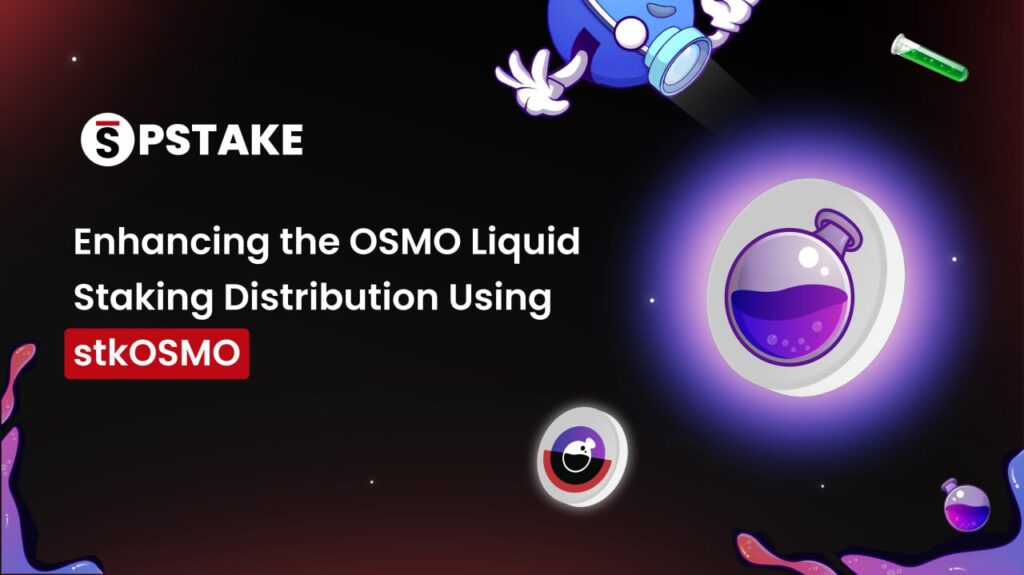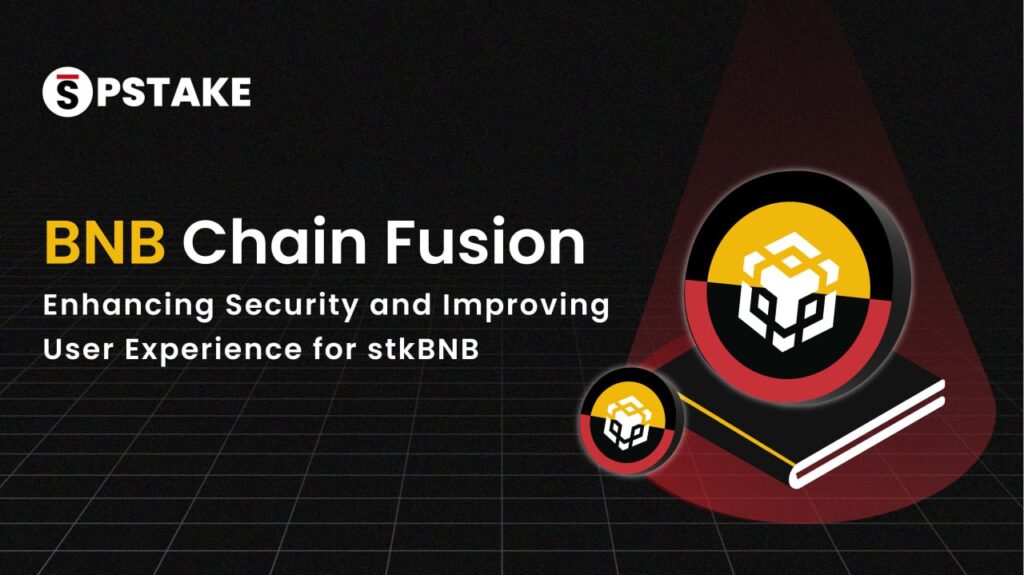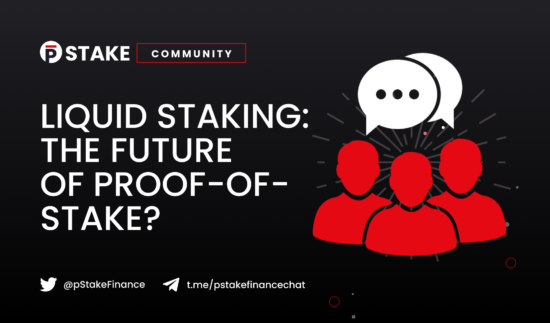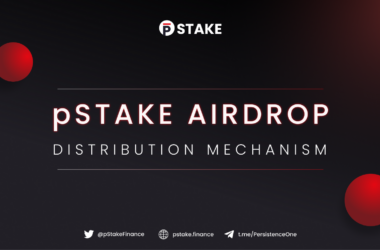Author: Dan Pavel Sinkovicz
Original article: Click here.
Note: This is a community-written piece submitted during our Article Contest campaign. The views expressed within are those of the author and not necessarily those of the pSTAKE team.
One event may change the entire cryptocurrency space as we know it — The Merge. This update will transition Ethereum from the current Proof-of-Work (PoW) consensus to Proof-of-Stake (PoS). Although this shift is only directly affecting Ethereum, it will indirectly affect the entire cryptocurrency market.
Post merge, more attention will continue to shift towards PoS and the new possibilities that arise with it. People will learn how securing a PoS network works, look at the APY that comes with it, and ask themselves: “After staking my assets to secure the network, now what?”. I’ll tell you — liquid staking.
Table of Contents
- What is liquid staking?
- Why liquid staking?
- State of liquid staking today
- pSTAKE — Interoperable liquid staking
- The future of liquid staking
What is Liquid Staking?
There are multiple ways to achieve liquid staking. But every concept lies upon issuing a 1:1 representative token of the underlying asset.
For example, the holder takes their $ATOM (Cosmos Network) tokens and brings them to a liquid staking platform. The user can stake those $ATOM with a list of trusted validators on the Cosmos Network and the protocol issues a 1:1 representative token of the $ATOM. We’ll be calling this token $stkATOM – the name of the representative $ATOM token issued by pSTAKE.
These representative $stkATOM tokens can then be used within the DeFi ecosystem to generate DeFi yields, such as on decentralized exchanges (DEXs) and lending and borrowing protocols, while the underlying asset is staked to secure the network and is generating staking rewards. This concept applies to any $stkTOKEN that the liquid staking protocol supports.
Why Liquid Staking?
Access to both staking and DeFi — double rewards
Let’s face it; many asset holders care about those sweet rewards. Everyone dreams about living off passive income. Using liquid staking, they can increase the APY generated by their assets and be a step closer to the goal.
As PoS gets more and more popular, people start to realize its drawbacks. Once you’ve bought and locked your assets to secure the network, you get a specific APY. And … that’s it.
Compared to traditional banking APYs, staking offers stakers a much more attractive yield. On top of the beautiful APY, they gain peace of mind when delegated to a trusted validator. For some, it is worth it. But for others, it’s not. Thus, many are utilizing DeFi to gain more yields on their assets.
As a result of the limitations of PoS assets, liquid staking came to life. By using a liquid staking protocol, the asset holder gets access to DeFi and staking simultaneously.
Apart from giving asset holders the exceptional gift of enjoying staking and DeFi yields, there are other not-so-known benefits of liquid staking.
Attract assets to secure the network — increased security
Being forced to choose between using DeFi and staking, the holder compromises on one part or another. Choosing to stake will restrain the amount of passive income the assets can generate. On the other hand, using DeFi to, for example, provide liquidity in a liquidity pool could provide greater returns. But, the security of the underlying chain of the asset will suffer.
By design, Proof-of-Stake networks are more secure when a higher percentage of the total supply is staked. At the moment, DeFi protocols are a burden to the underlying network. Instead of the tokens flowing into securing the network, many are used in DeFi. With liquid staking, the network security will not suffer in this way, as the underlying assets are staked at the same time and are thus helping to secure the network.
Both the holders of the assets and the underlying network score a big win with liquid staking.
State of Liquid Staking today
As of today, several liquid staking protocols operate on a specific network. For instance, Lido aims to unlock the liquidity of staked assets on Ethereum or Marinade on Solana. There’s one common problem, though — lack of interoperability. Each liquid staking protocol is currently only operating on one network at a time.
Fortunately, there’s one network that aims at solving the biggest issue in a blockchain — Cosmos Network. Their revolutionary technology, IBC (Inter-Blockchain Communication), is an easy-to-implement feature that allows any network that adopts IBC to communicate effortlessly. Assets on IBC-enabled chains are transferable between other IBC-enabled chains.
The liquid staking protocol within the IBC ecosystem is pSTAKE. pSTAKE, as the other liquid staking protocols, aims to unlock the liquidity of staked assets but pSTAKE does so across networks.
As of now, pSTAKE has begun with a focus on interoperability between Cosmos-based assets and the Ethereum network, enabling representative tokens of XPRT and ATOM to be used on Ethereum. However, the team is planning to also migrate to pSTAKE the Persistence Core chain, which is IBC-enabled. Not only will the fees be considerably lower, but tokens of connected IBC networks will be able to flow into pSTAKE with substantially lower effort.
pSTAKE — Interoperable Liquid Staking
Token model
In contrast to its competitors, pSTAKE relies on a dual-token model. One of the tokens represents the underlying token of the network. For instance, bringing Cosmos’s native token $ATOM to pSTAKE will issue a 1:1 ERC-20 representative token called $pATOM.
Now, by having $pATOM tokens, the user can stake them via pSTAKE for $stkATOMs. At this point, the underlying $ATOM token will be evenly distributed to staking across multiple trusted validators. While holding $stkATOM tokens, the user will passively accrue staking rewards in the form of $pATOM. But, the $stkATOM tokens are not locked anywhere. This means $stkATOM tokens can float around in DeFi protocols on Ethereum while the underlying asset $ATOM is staked and securing the network.
Currently, pSTAKE supports two tokens — $ATOM of Cosmos Network and $XPRT of Persistence. Plus, there are $stkATOM/$ETH and $stkXPRT/ETH liquidity pools on SushiSwap. Liquidity providers of these pools will receive retroactive $PSTAKE token rewards upon $PSTAKE’s TGE, in addition to the usual pool swap fee share.
Decentralization and security of the underlying network
The current state of Proof-of-Stake network security is not in its greatest shape. A big portion of PoS tokens flow into DeFi, as opposed to being staked to help secure the network. In addition to this, staked tokens are often delegated to a few big and trusted validators, which make the network somewhat centralized.
One of the main goals of pSTAKE is to reduce the centralization of a network by distributing the tokens amongst a larger set of trusted validators — small and big. Not only that, but the fact that tokens flowing into pSTAKE actually get staked and then used in DeFi will attract more tokens being staked, thus increasing the security of the network. How wonderful is this? pSTAKE is solving some of the most pressing Proof-of-Stake-related issues.
Fungibility
By design, stkTOKENS are fungible — mutually interchangeable. As stated before, the tokens delegated are distributed across a set of trusted validators to achieve this. This means each staker has an equal percentage of tokens delegated across delegators. This approach mitigates the risk of slashing.
In the future, pSTAKE plans to develop an insurance fund that will cover all or a significant part of the slashing costs that stakers will incur.
Interoperability
As of now, the pSTAKE protocol lies upon the Ethereum network. However, the team is planning to also migrate to the Persistence Core chain, which is IBC enabled. Not only will the fees be considerably lower, but tokens of connected IBC networks will be able to flow into pSTAKE with substantially lower effort.
The future of liquid staking
As Proof-of-Stake and DeFi gain more and more traction, people are starting to look for solutions to the current problems. As stated in the introduction, right now, holders are obliged to choose between staking or DeFi. No matter which is the chosen one, both have consequences. From a yield standpoint, DeFi is generally more attractive. From a network standpoint, staking is crucial. Liquid staking allows for both without conflict, solving prominent issues amongst PoS and DeFi.
Conclusion
So, is liquid staking the future of Proof-of-Stake? Short answer: yes! If you’ve arrived here, you’ve probably realized this as well.
Proof-of-Stake has been hindered in many ways by the emergence of DeFi, and it’s not going to stop without a solution to embrace both PoS and DeFi. The answer is liquid staking, which can enable both PoS and DeFi to grow in strength together.
To end on the same note as we started, with Ethereum’s transition from Proof-of-Work to Proof-of-Stake, we must address these paramount challenges now. The liquid staking protocols, especially pSTAKE, are poised to thrive during this transition. Let’s anticipate the future and take part in it today!
About pSTAKE
pSTAKE is a liquid staking protocol that unlocks liquidity for your staked assets. With pSTAKE, you can securely stake your Proof-of-Stake (PoS) assets, participate in protocol improvements and security to earn staking rewards, and receive staked underlying representative tokens (stkASSETs) which can be used to explore additional yield opportunities across DeFi.
At present, pSTAKE supports Binance Chain (BNB), Cosmos (ATOM), Persistence (XPRT), and Ethereum (ETH) networks’ native tokens, with a view to support more chains and assets in the future (SOL, and AVAX).
Developed by Persistence
Persistence is a Tendermint-based, specialised Layer-1 network powering an ecosystem of DeFi applications focused on unlocking the liquidity of staked assets. Persistence facilitates the issuance and deployment of liquid-staked stkASSETs, allowing users to earn staking rewards while participating in DeFi primitives, such as lending/borrowing and liquidity provisioning on DEXs.
Persistence aims to offer a seamless staking and DeFi experience for PoS (Proof-of-Stake) users and enable developers to build innovative applications around stkASSETs.
Join Our Movement
Twitter | LinkedIn | Telegram | YouTube | Reddit | [email protected]










